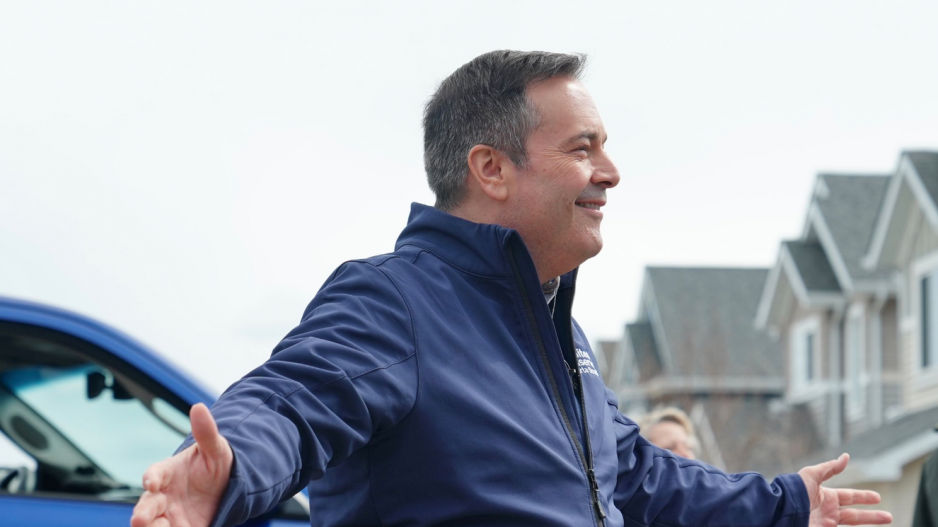In the final years of the 20th Century, discussions about finding a way to unite Canada’s centre-right parties became increasingly important to conservative voters. Jean Chrétien was forming majority governments as leader of the federal Liberal Party with negligible support from voters in Western Canada.
Many Canadians pondered whether the Progressive Conservatives and the Reform Party had more in common than the issues that were supposed to divide them. Once the parties united, they managed to limit the Paul Martin-led Liberals to a minority in 2004, only to win power two years later and maintain it for the next nine.
In Alberta, the 2015 provincial election results that shocked some (but not everyone) could be traced back to two defining issues. First, the absence of a unified centre-right option made voters vacillate between the seemingly unpopular Progressive Conservatives and the untested Wildrose Party. Second, the self-styled “candidate of hope” that emerged after the leaders’ debate was Rachel Notley of the New Democratic Party (NDP).
This year, the two issues that propelled Notley to victory in Alberta were no longer present. The centre-right forces amalgamated to form the United Conservative Party (UCP) and leader Jason Kenney successfully connected with voters who were ready and willing to change the government, even if his own personal ratings left much to be desired.
A Research Co. “exit poll” asked Albertans about their views, motivations and hopes heading into the provincial election. The results show that the electorate connected significantly more with the winning party on ideology, and less so on personality.
Across the province, 38% of voters say the most important factor for their vote this year was “the party’s ideas and policies,” followed by “the party’s leader” (27%), “desire for change” (13%) and “disgust with other candidates” (9%).
The voters who stood by Premier Notley and the NDP were primarily motivated by “the party’s ideas and policies” (43%) and “the party’s leader” (35%).
For the more than half of voters who selected the UCP, the motivations were different. Roughly the same proportion (40%) acknowledged voting primarily for “the party’s ideas and policies,” while 22% cited a “desire for change” and 21% mentioned “the party’s leader.” Having a different party in power was just as important for voters as whoever was leading the vehicle for change.
When it comes to establishing an emotional connection with the base, Notley had her share of success. But Kenney was able to capitalize on the growing number of Albertans who were ready to try something new. In the poll, two-thirds of voters (66%) said it was “time for a change of government” in the province. This included 41% of those who voted for the New Democrats in 2015.
This month’s election marks a return to a two-party system in Alberta’s legislature that has not been present since 1993. The Alberta Party failed to resonate with voters who could have been worried about Kenney’s stance on social issues, garnering only 9% of all cast ballots and getting no seats, even with former Edmonton Mayor Stephen Mandel as leader. The Liberal Party, unable to run in every riding, got just 1% of the vote, as leader David Khan failed to win in his constituency.
The campaign was described as “divisive” and “nasty” at some points. The NDP’s decision to focus on controversies related to the UCP’s internal leadership race, as well as some comments by the opposition’s candidates, did not create a sense of dismay from prospective voters. The tactic was reminiscent of Democratic nominee John Kerry’s 2004 campaign in the United States against Republican incumbent George W. Bush: it made NDP supporters more upset about the possibility of defeat, but did not bring any new voters to the party’s column.
Recent campaigns in North America have proved that a focus on personal issues and statements are not enough to turn voters who are worried about the economy against a particular leader or candidate. In the United States, it did not work with Republican Donald Trump in Red States and even some Blue States that went against Hillary Clinton in 2016. It also failed to work against Doug Ford in Ontario last year, and, to a lesser extent, against François Legault in Quebec. The days of campaigns crashing because of an indiscretion or an ill-timed statement seem to be over.
On election night, Kenney’s message was significantly softer in tone than what was observed in the heyday of the campaign. His speech was more about “nation-building” (even including some bits in French for Quebec’s audience) than Alberta’s priorities. Back in December, we reviewed how the concept of Alberta separatism was not significantly important before the campaign began. We will have to wait a few months to see if there is more appetite for it as Canada’s federal election looms.
Mario Canseco is president of Research Co.
Results are based on an online study conducted April 16–17, 2019, among 500 adults in Alberta who voted on the 2019 provincial election. The data has been statistically weighted according to Canadian census figures for age, gender and region in Alberta. The margin of error – which measures sample variability – is plus or minus 4.4 percentage points, 19 times out of 20.




